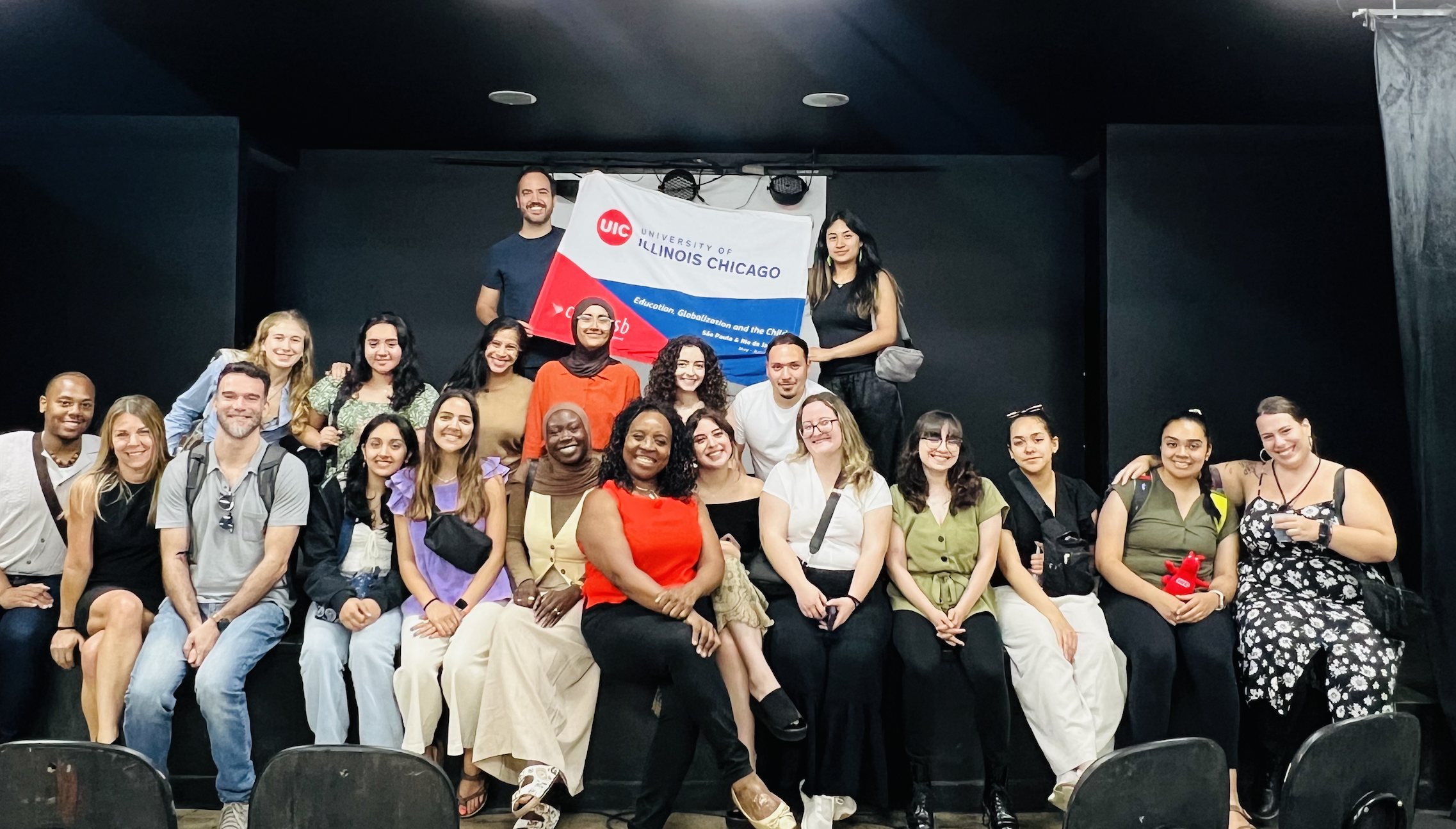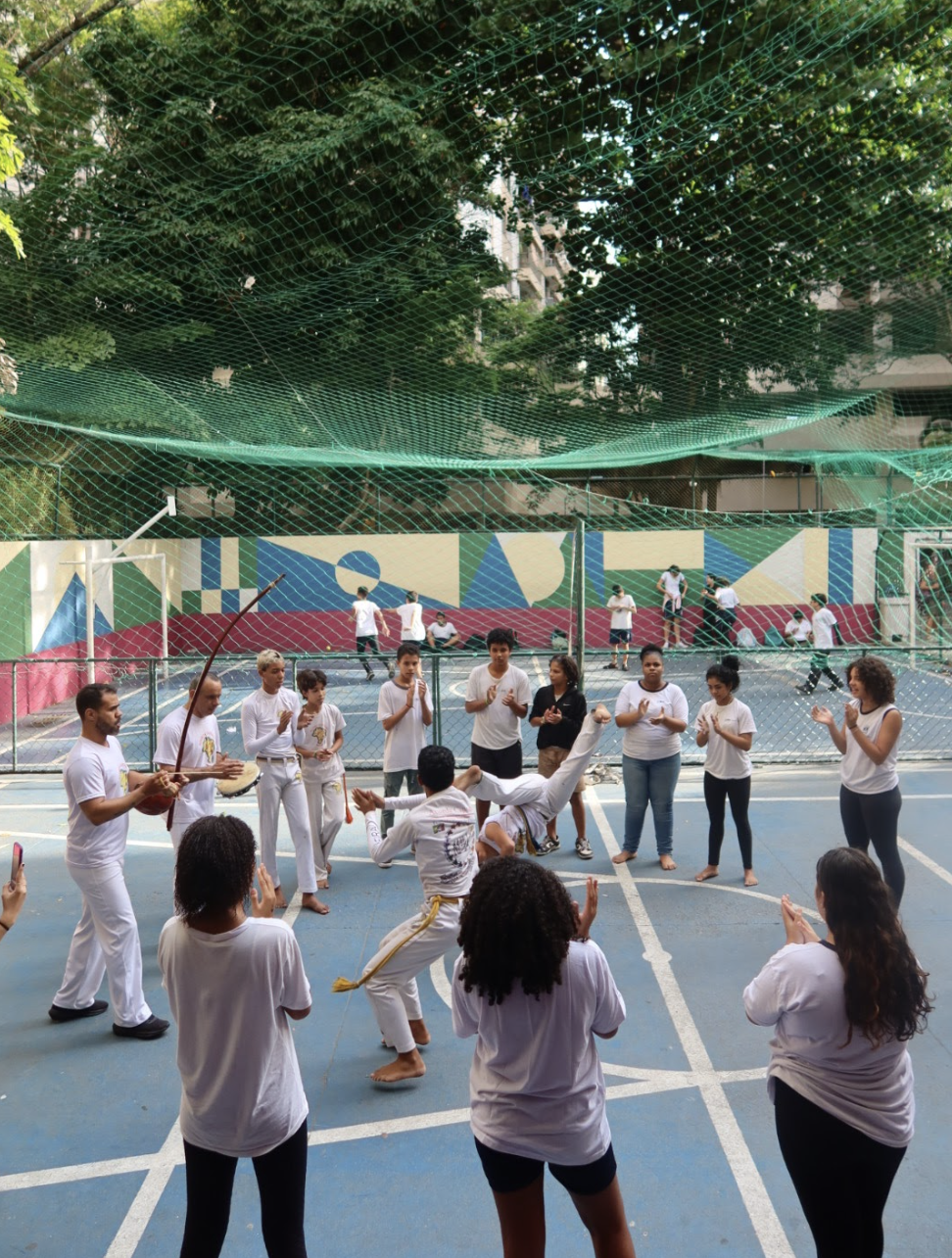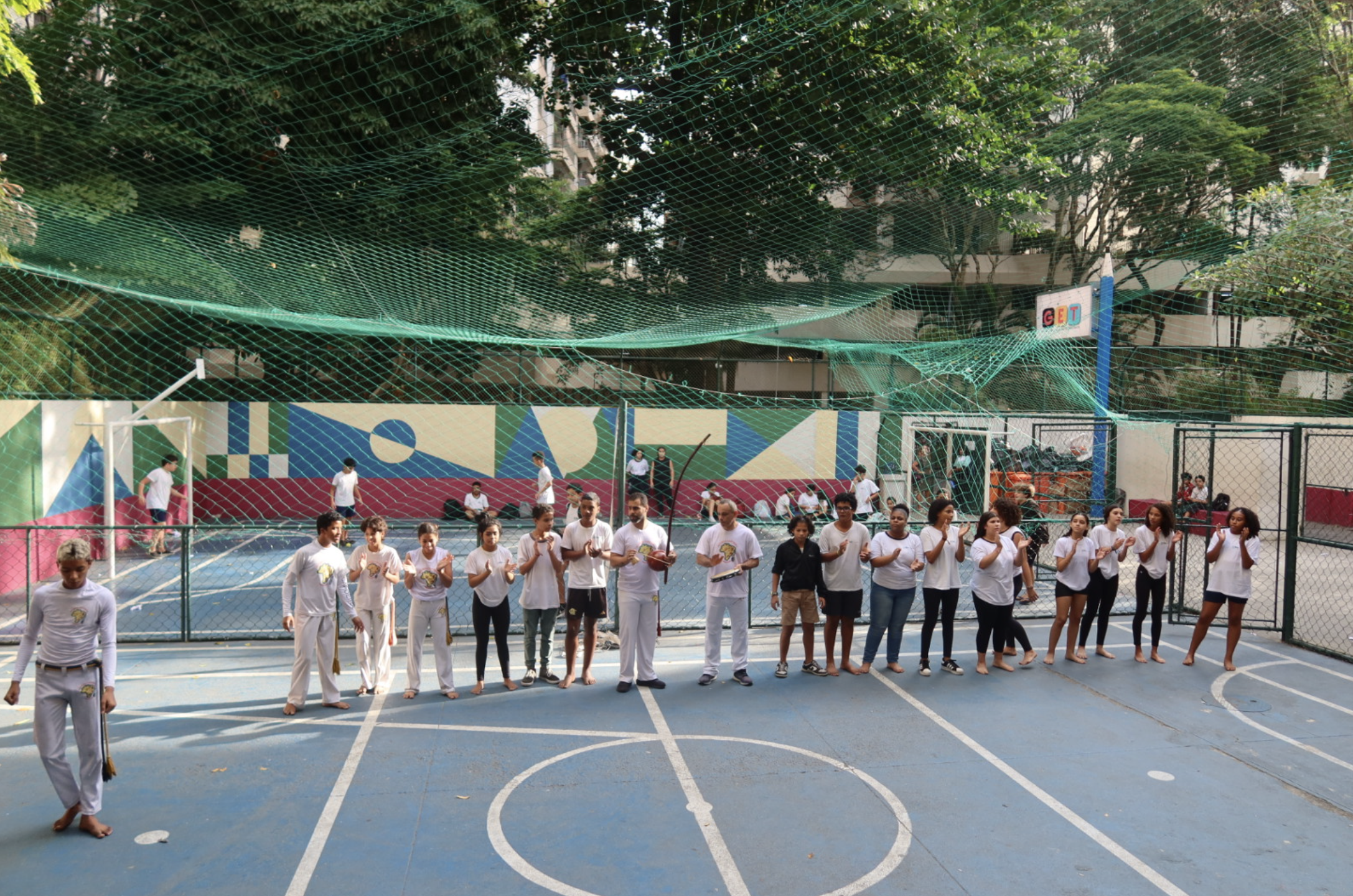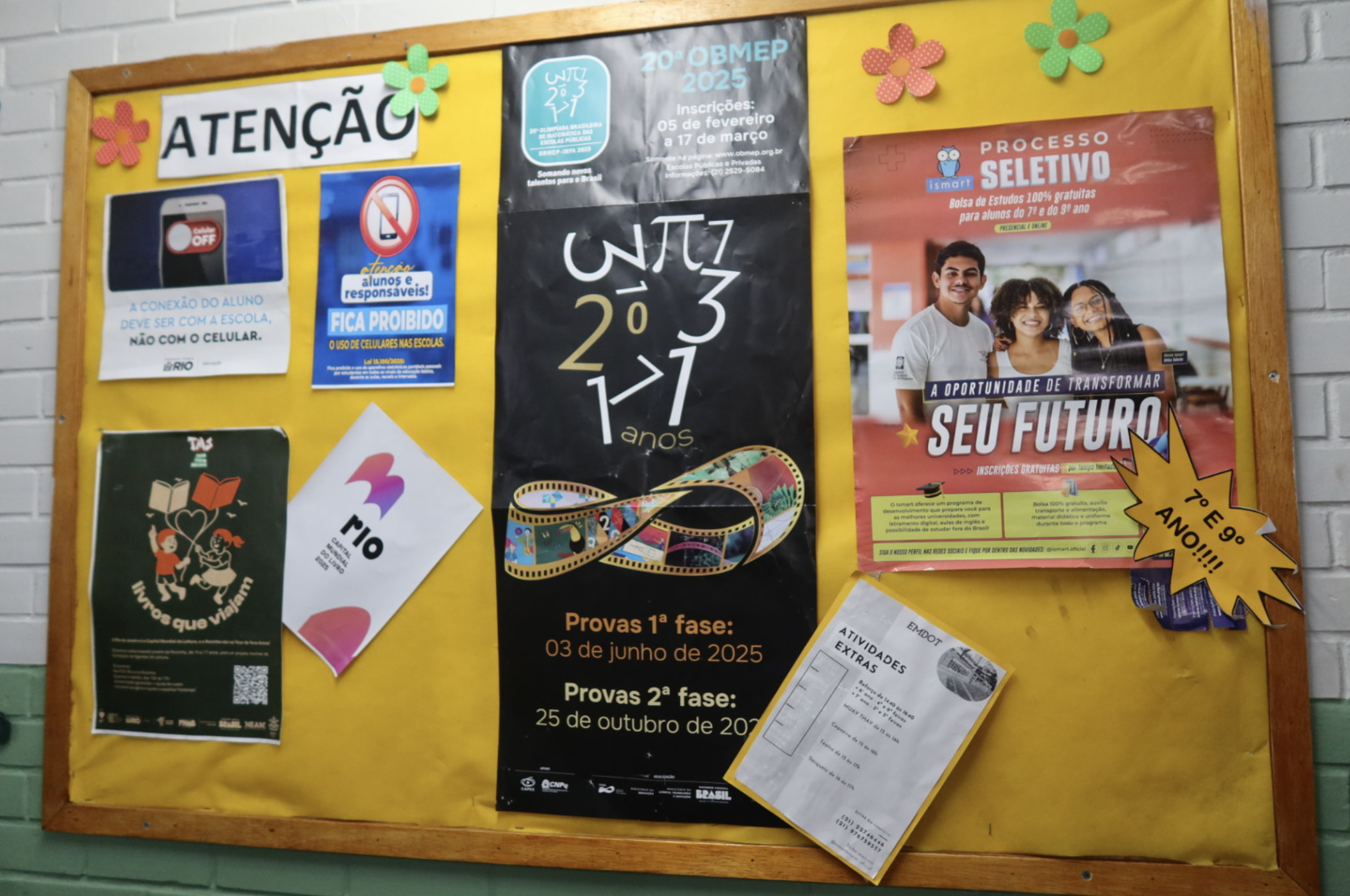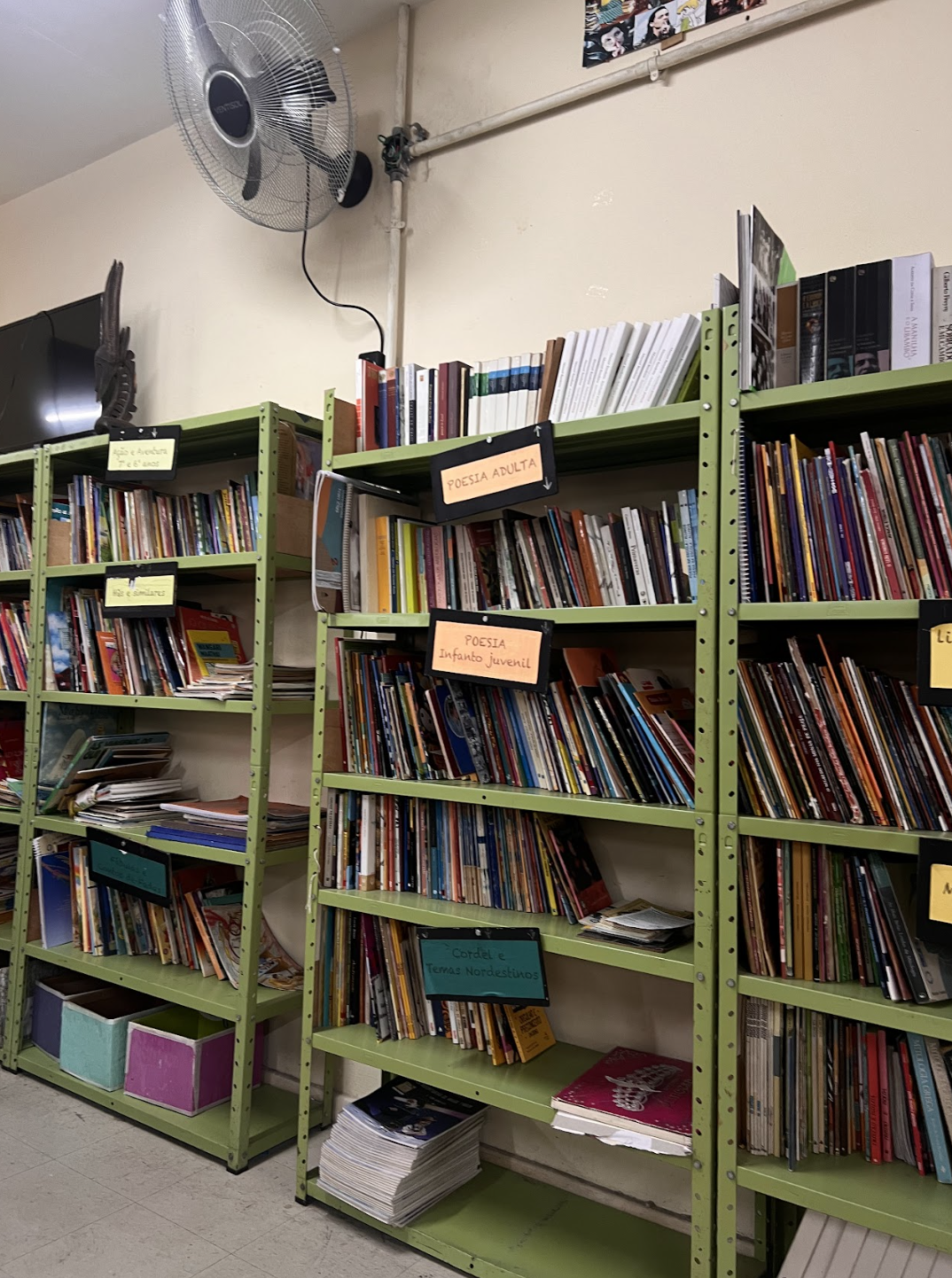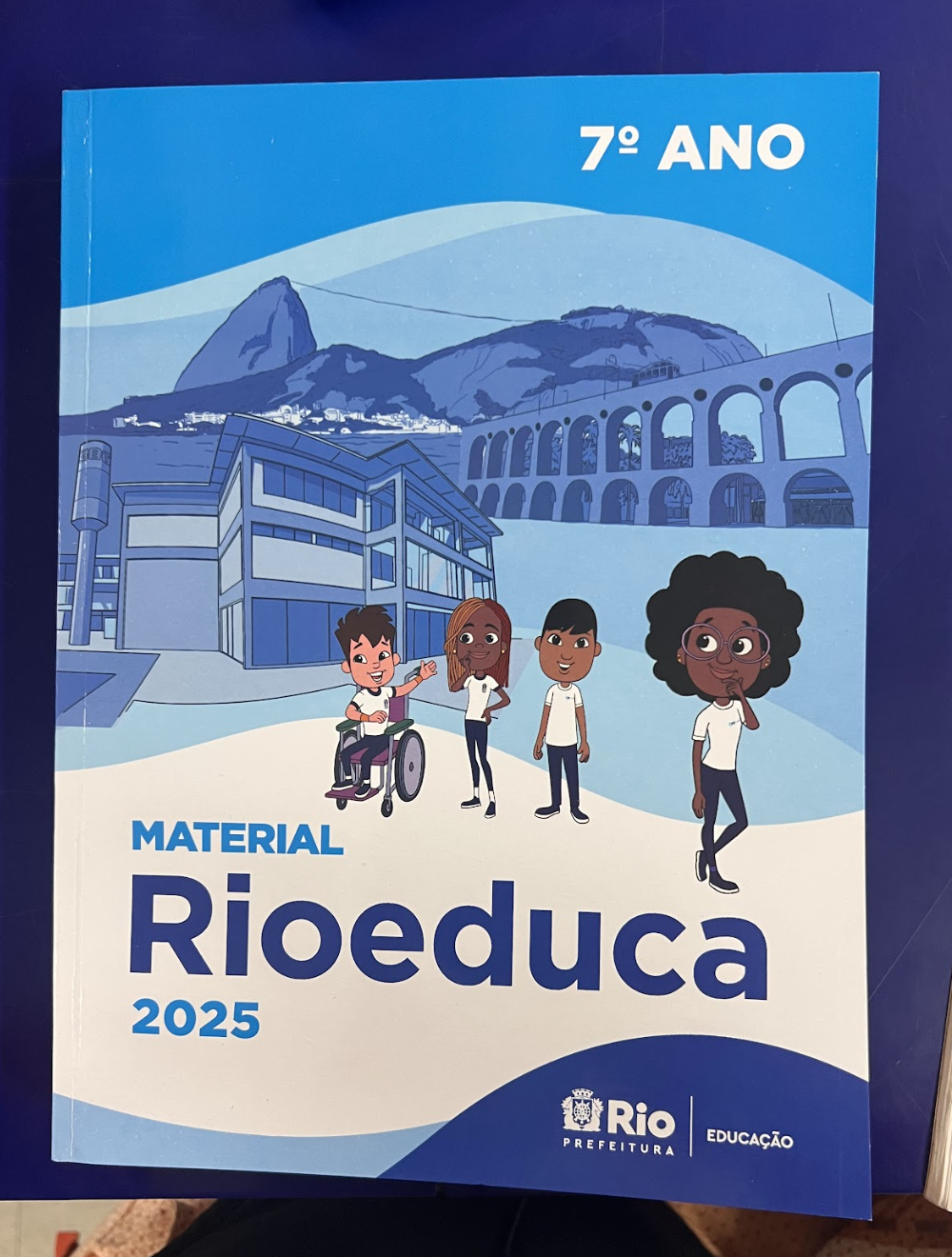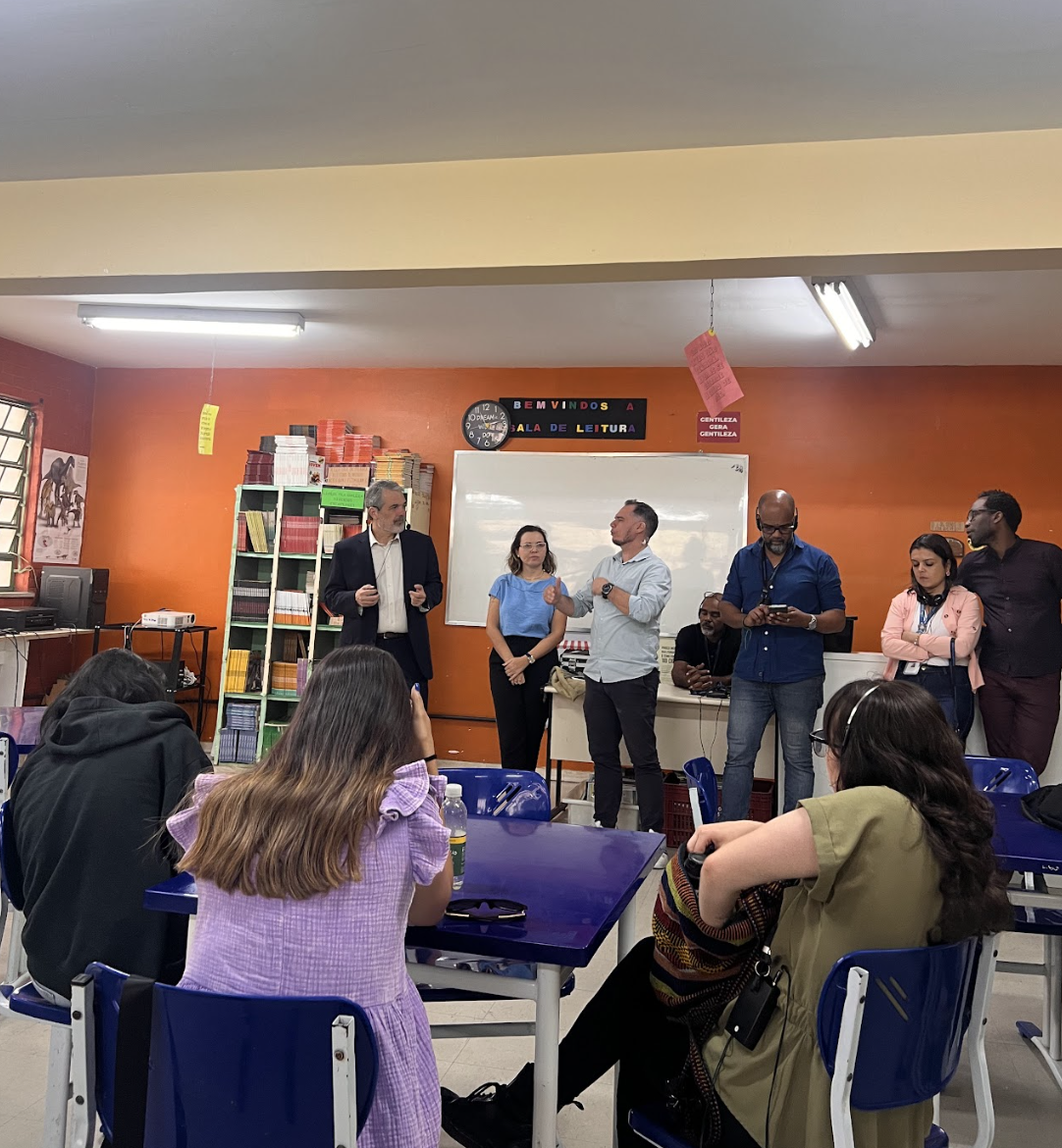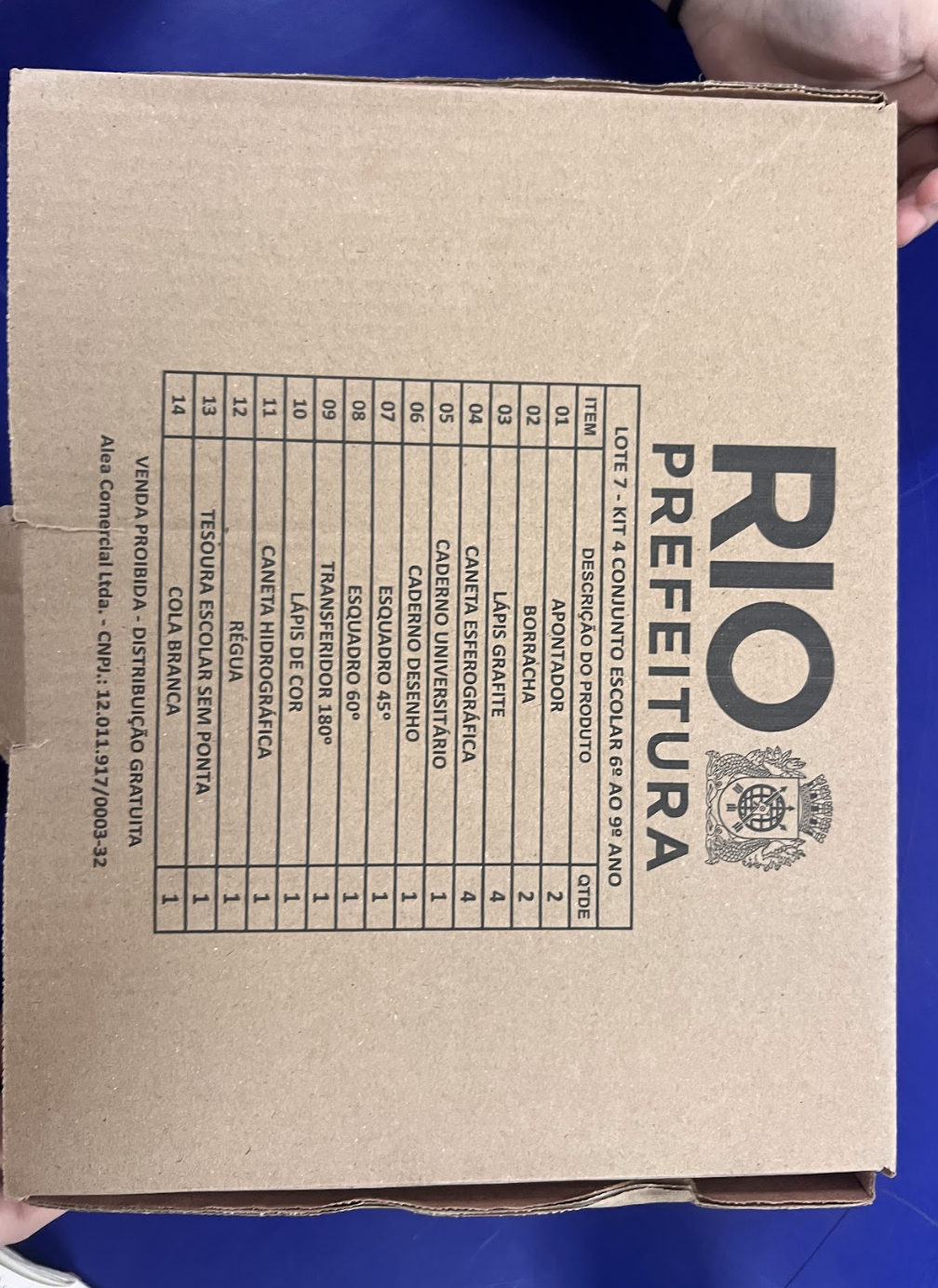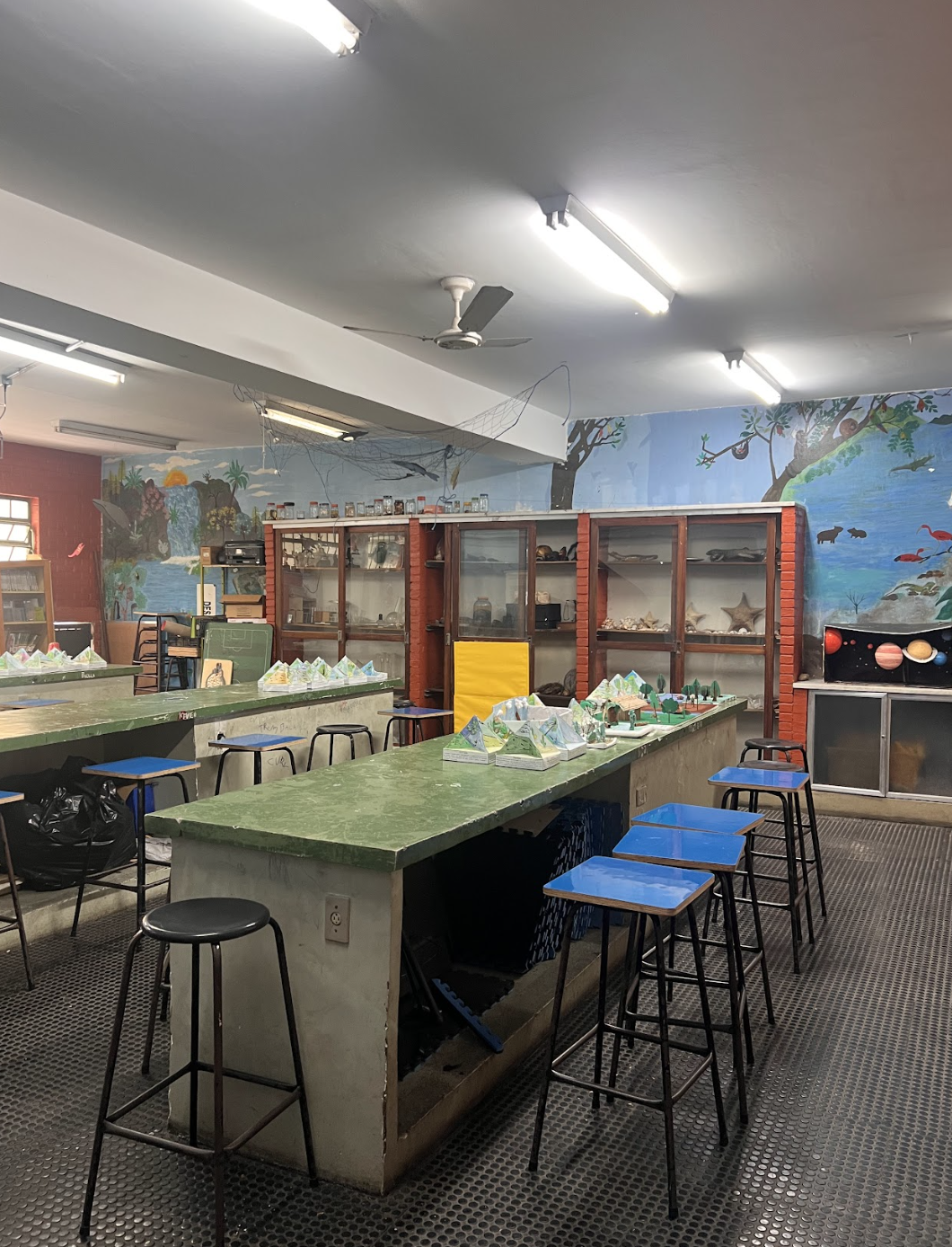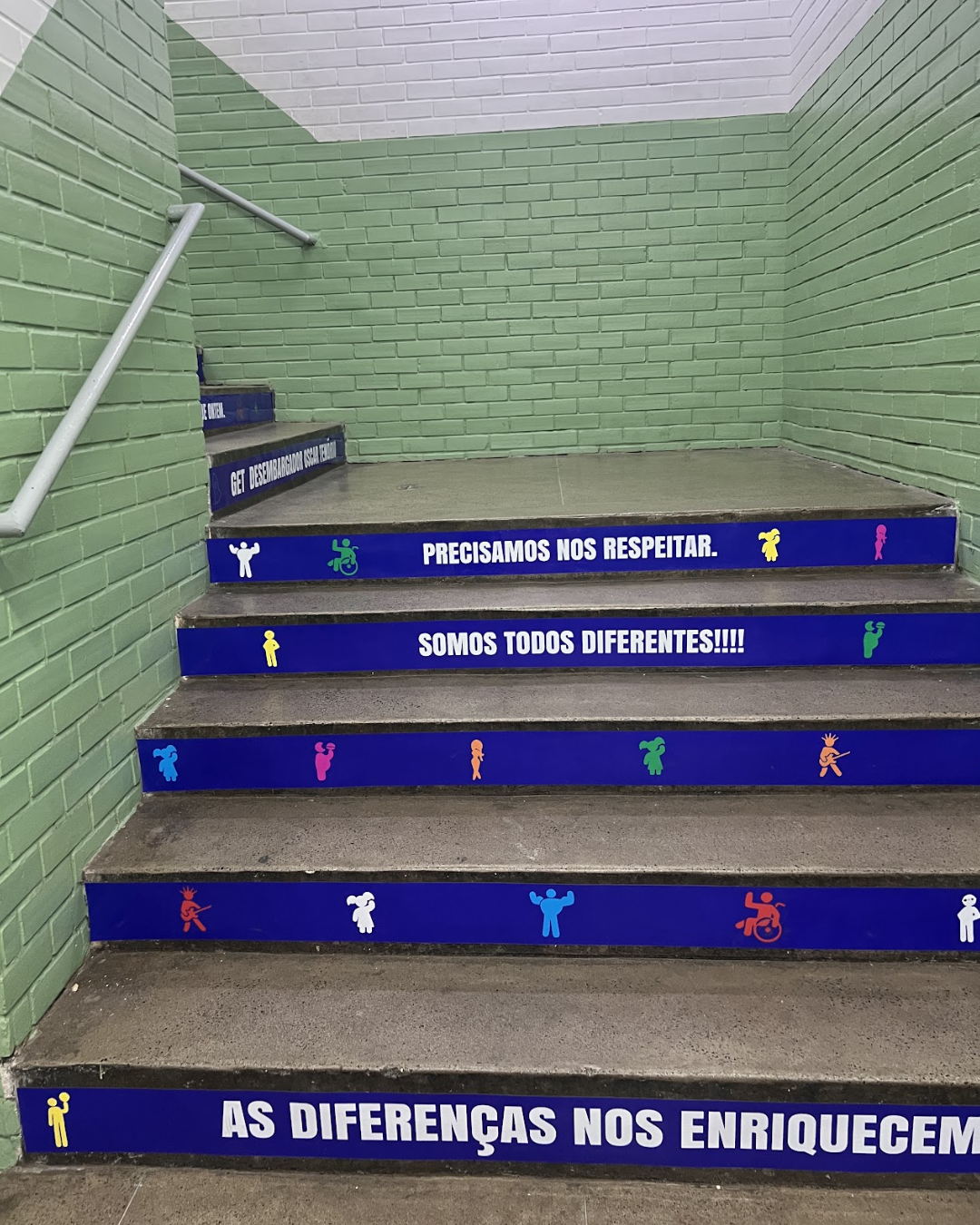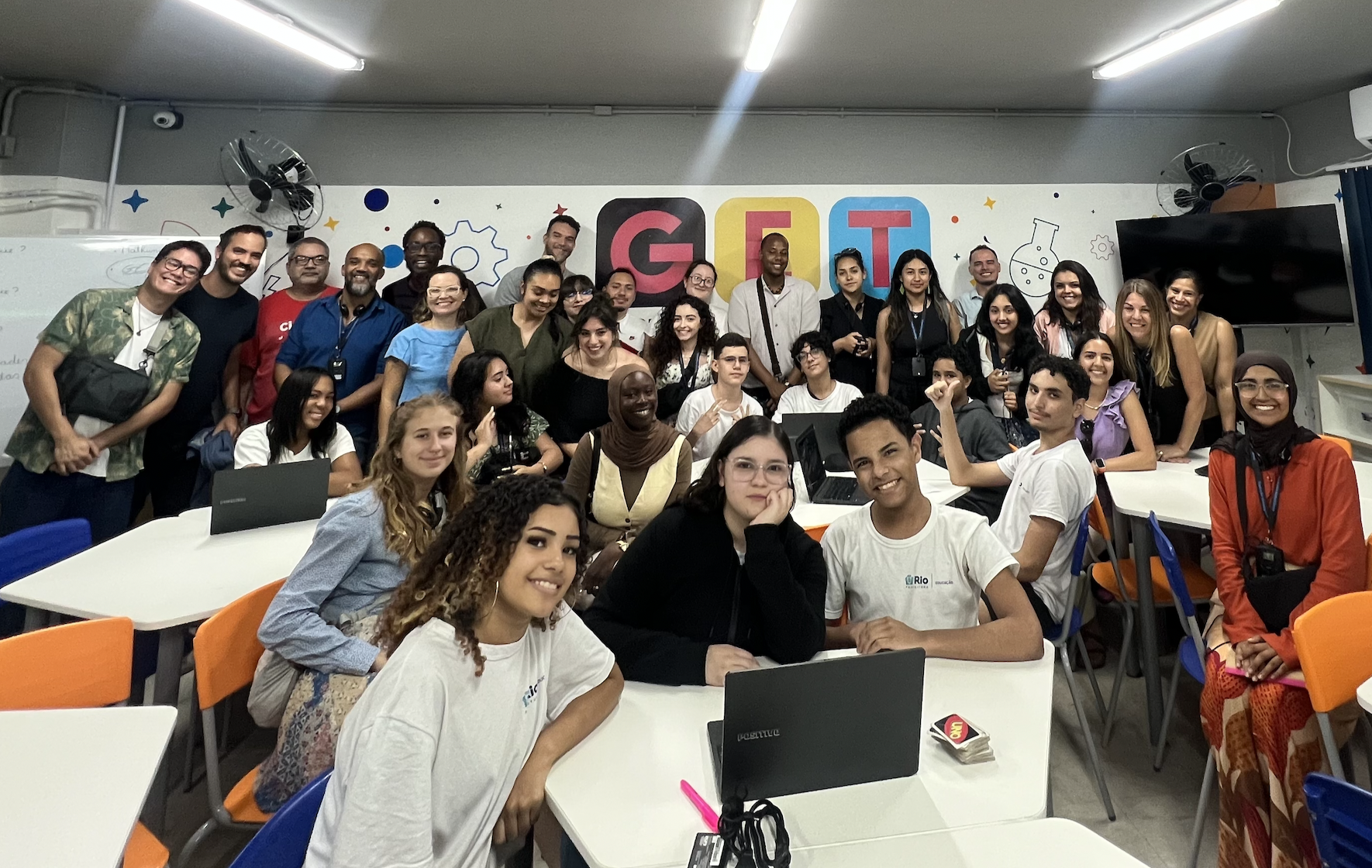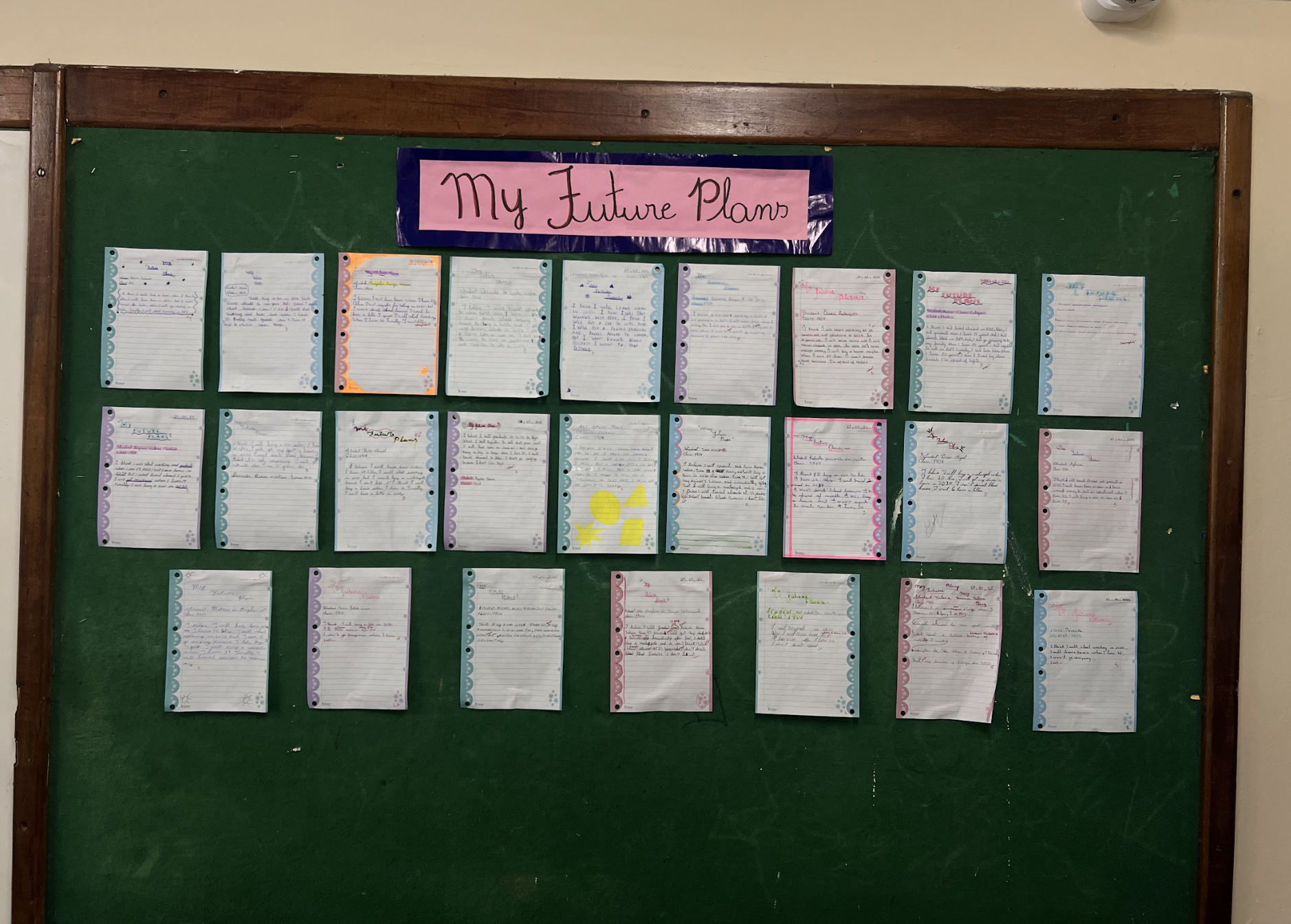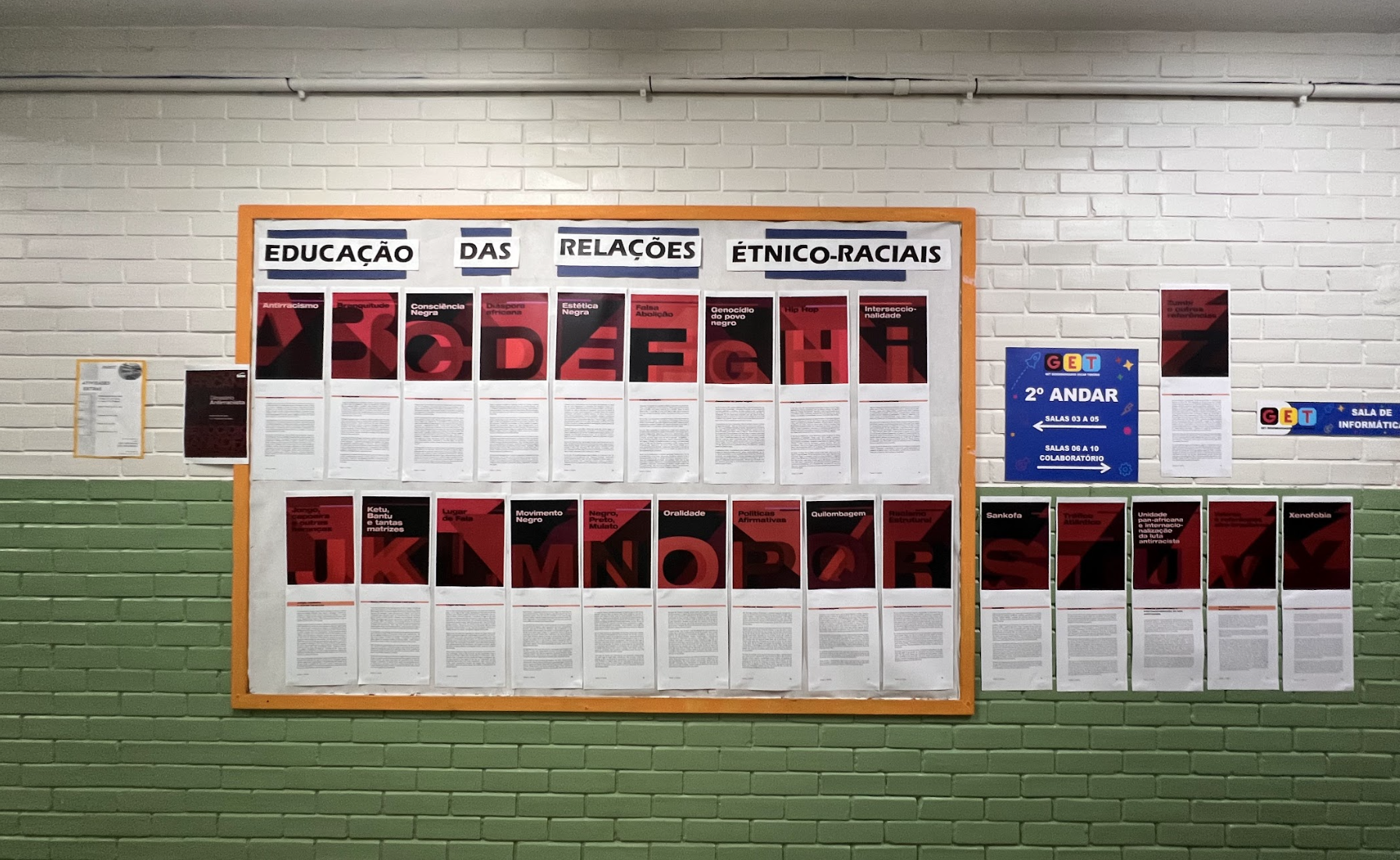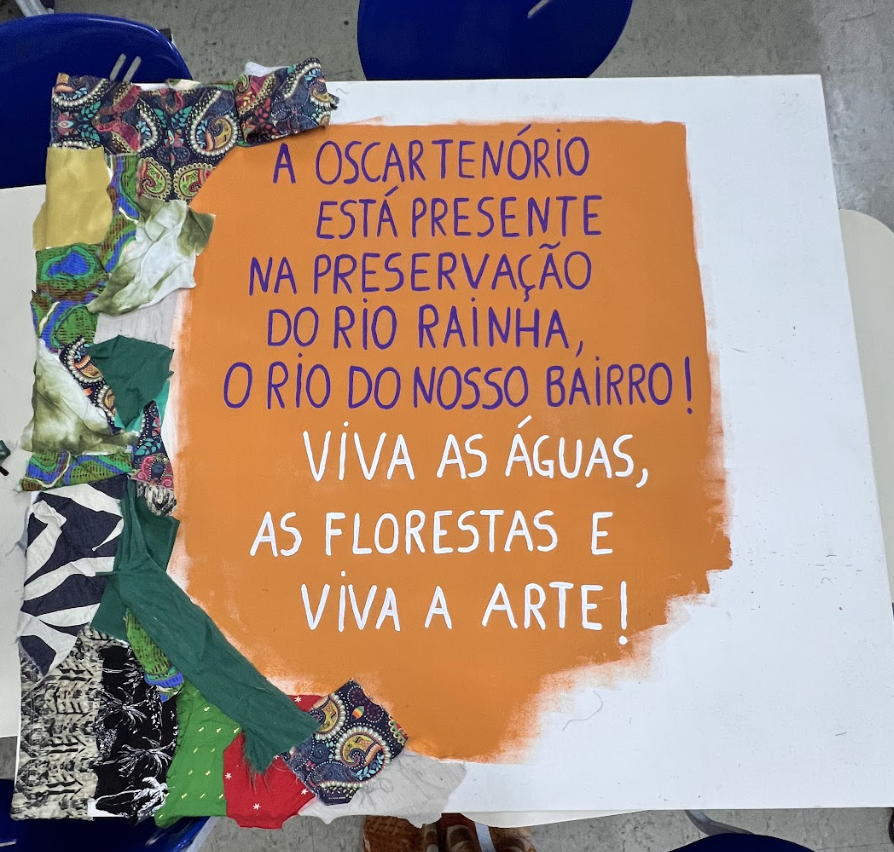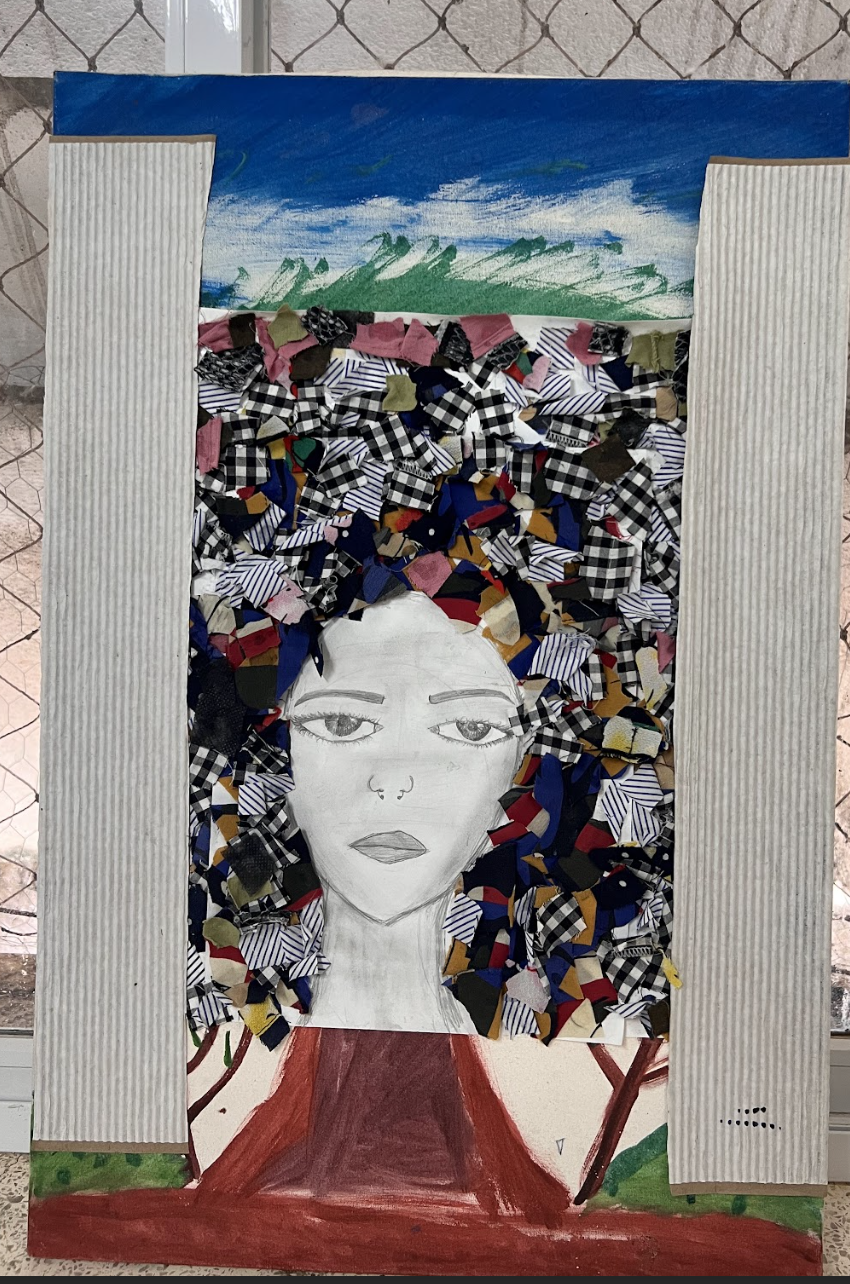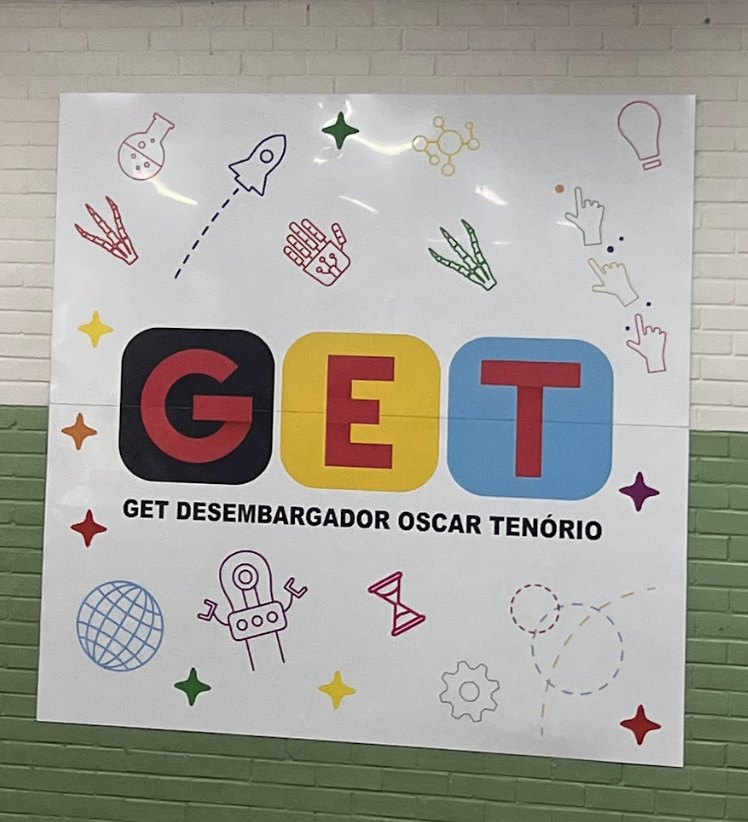GET Desembargador Oscar Tenório
Syeda Begum
On Tuesday, June 3rd, our study abroad group visited a local public school in Rio de Janeiro. We arrived at GET Desembargador Oscar Tenório located in a favela in Gávea, serving students from kindergarten through 9th grade (ages 0 to 14). From the very start, we were welcomed with warm smiles and handed headphones and translation devices, a small gesture that showed how thoughtful and prepared this school was, even for visitors who didn’t speak Portuguese. As we entered, the school felt alive, with bright murals, open courtyards, and colorful spaces that made learning feel joyful and intentional. It was clear this wasn’t just a place for academics, it was a space designed for community, expression, and care.
GET is part of Brazil’s largest municipal network of public schools and is deeply committed to removing the barriers that often keep children from learning. Every day, students receive three meals, access to school supplies, shoes, uniforms, transportation cards, and even vouchers for their books. The school also provides mental health counseling, tutoring, and inclusion support for students with special needs. I was especially moved to learn that students don’t even have to live in the area to enroll. Through an online application system, thousands of students are accepted into schools like GET based on need and availability, not a lottery, and not by zip code.
While there is structure, like mandatory annual exams for students and a minimum of three assessments per year by teachers, there’s also flexibility and heart. Teachers are supported by a school board that evaluates and updates teaching materials every year, ensuring that content remains relevant, inclusive, and engaging. One thing I loved learning about was the “Life Project” that each school tailors to their community. These projects might focus on preparing students for life after 9th grade or empowering them to solve real issues in their neighborhoods. It's a beautiful example of how social-emotional learning is embedded into the curriculum, not treated as an afterthought. Walking through the school, one of the most moving parts was reading the powerful messages painted along the stairs. These weren’t just decorations, they were daily affirmations that shaped the culture of the school. Some messages that stuck with me were:
“PRECISAMOS NOS RESPEITAR. SOMOS TODOS DIFERENTES!!!! AS DIFERENÇAS NOS ENRIQUECEM.”
"We need to respect each other. We are all different! Our differences enrich us."
“A NATUREZA É A GRANDE ARTE DO PLANETA. NOSSA MISSÃO É PRESERVÁ-LA.”
"Nature is the planet's greatest art. Our mission is to preserve it.”
“NINGUÉM SOLTA A MÃO DE NINGUÉM.”
"No one lets go of anyone's hand."
“MISTURE EDUCAÇÃO, RESPEITO, UM POUCO DE SORRISO, PACIÊNCIA – O MÁXIMO QUE PUDER.”
"Mix education, respect, a bit of a smile, and patience—as much as you can."
As we walked through the halls, we saw bulletin boards filled with student art, projects, and reflections. One display that really stood out featured letters where students shared their future plans, like dream jobs, studying abroad, traveling, and starting families. Their words were full of ambition and personality. It was beautiful to see how the school encourages students to dream beyond their current circumstances and imagine a future they’re proud of.
Inside the classrooms, we saw energy and creativity everywhere. One standout space was a multi-use lab, a hands-on learning area with laptops, art supplies, tools, and sewing machines. Students were working in small groups to design and create card games from scratch. From brainstorming to building, it was all student-led. This showed how much the school values project-based learning, giving students the chance to collaborate, problem-solve, and take ownership of their learning.
Unlike in the U.S., Brazilian public schools don’t accept private donations. Instead, funding is evenly distributed by the city, with extra federal support per student. This helps schools, like GET, located in a favela, receive what they need regardless of family income. I was also impressed by their textbooks, especially the “E Riveduca” series, which features diverse characters who grow with the students, helping create a sense of continuity and cultural pride.
To finish up our visit, we gathered near the basketball court, where a capoeira class was taking place. Capoeira is a traditional Afro-Brazilian martial art that blends dance, acrobatics, music, and self-defense, and watching it live was absolutely incredible. The students moved with such rhythm, coordination, and grace. What made it even more meaningful for me was that when we first arrived in Brazil, we got to participate in our own capoeira workshop. It was one of the most memorable experiences on this trip, and seeing students practice the same movements made me feel connected to them. Basically every school we visited had a Capoeira class that we were able to see. This showed just how deeply it is woven into the fabric of Brazilian identity. Capoeira isn’t just physical activity, it’s expression, resistance, storytelling, and cultural pride. Watching these students reminded me that education doesn’t only live in textbooks. It lives in the body, and the community. It was the perfect way to end a visit.
At the end of our visit, we were warmly invited upstairs to enjoy some refreshments. I really appreciated how the school shared their culture with us through food and drinks, and the coffee was a much-needed bonus for many of us! We wrapped up the day with a big group photo and heartfelt thanks to everyone for their time and hospitality. It was a wonderful way to end an inspiring and eye-opening visit.
